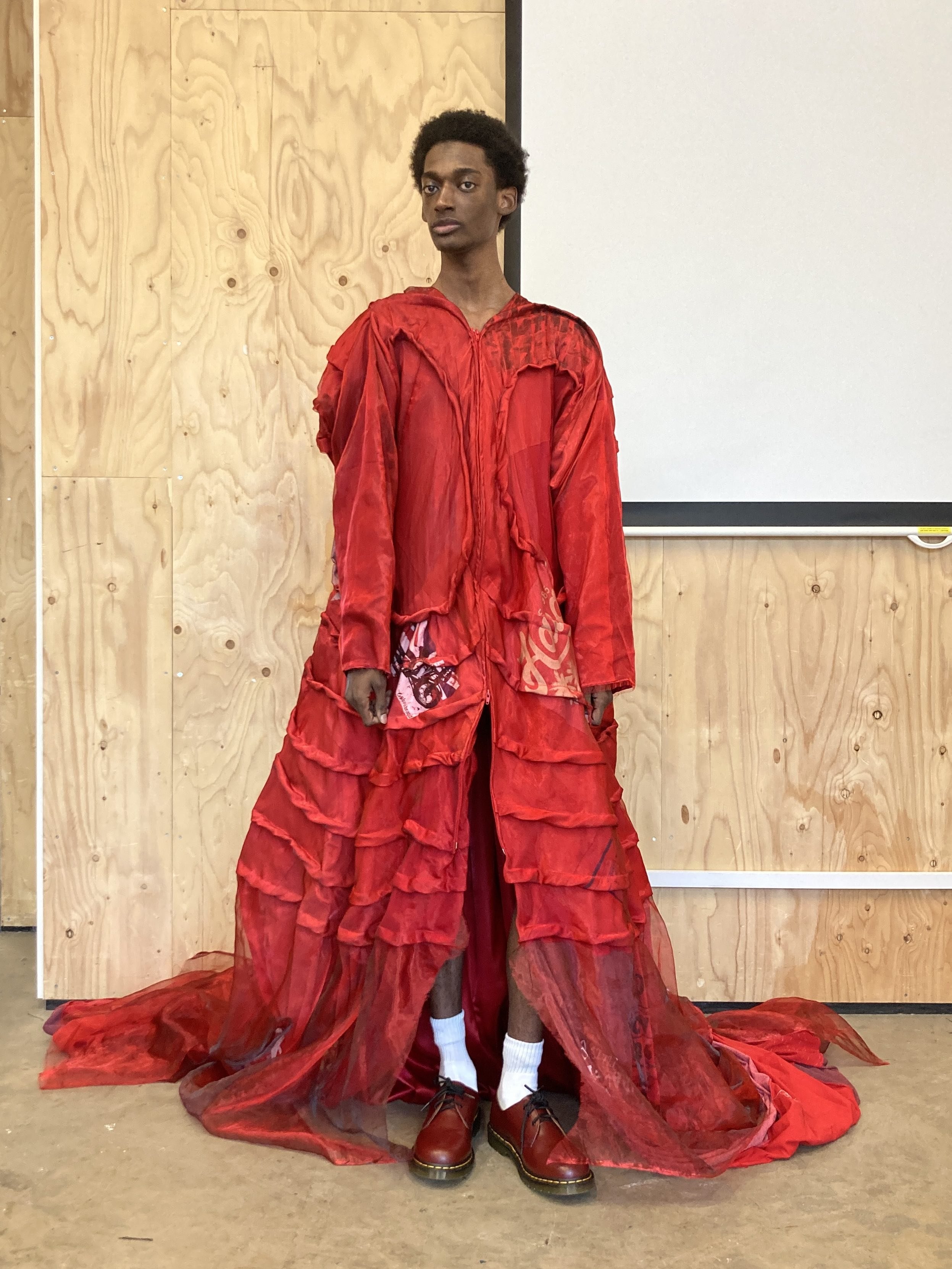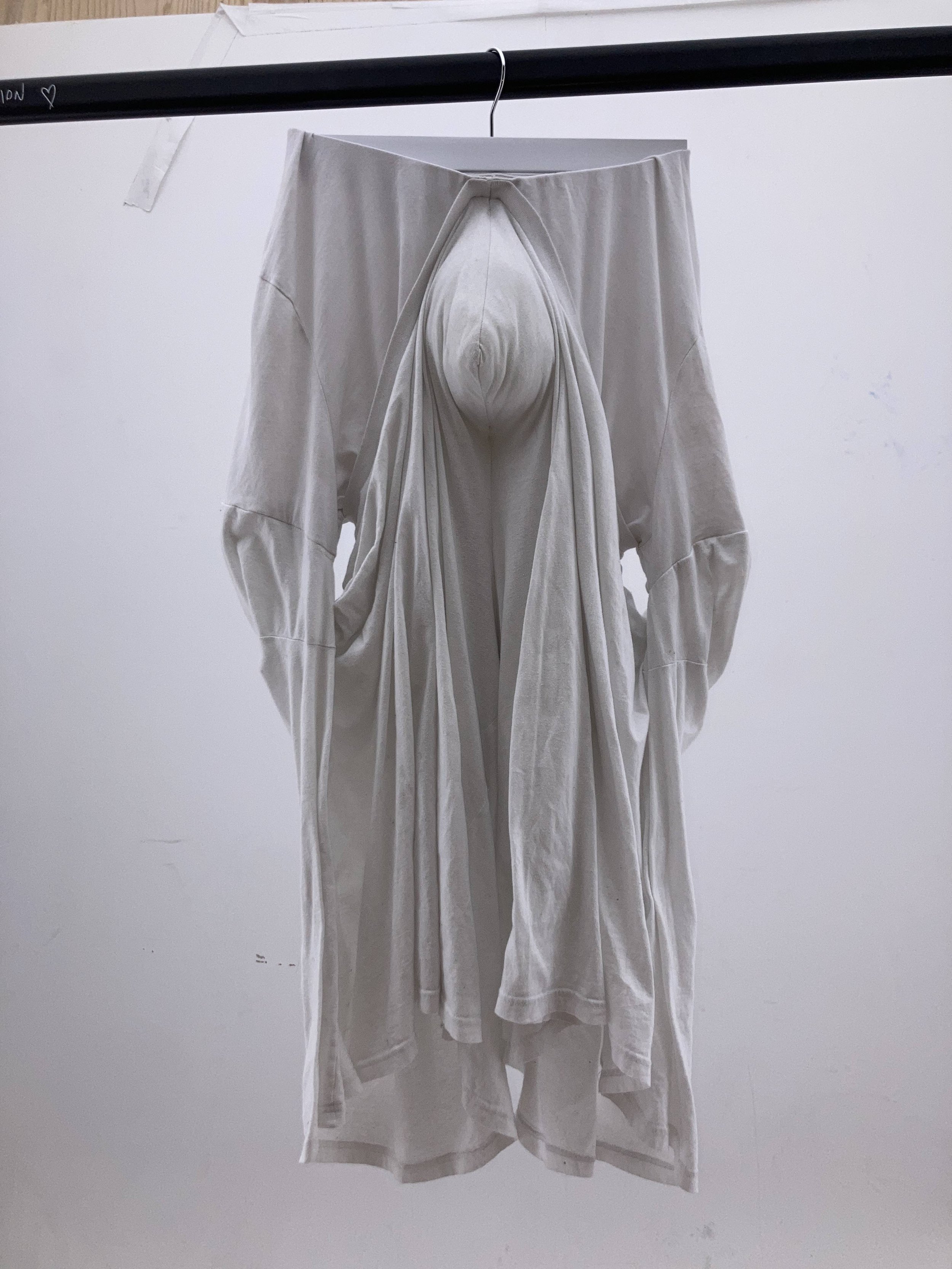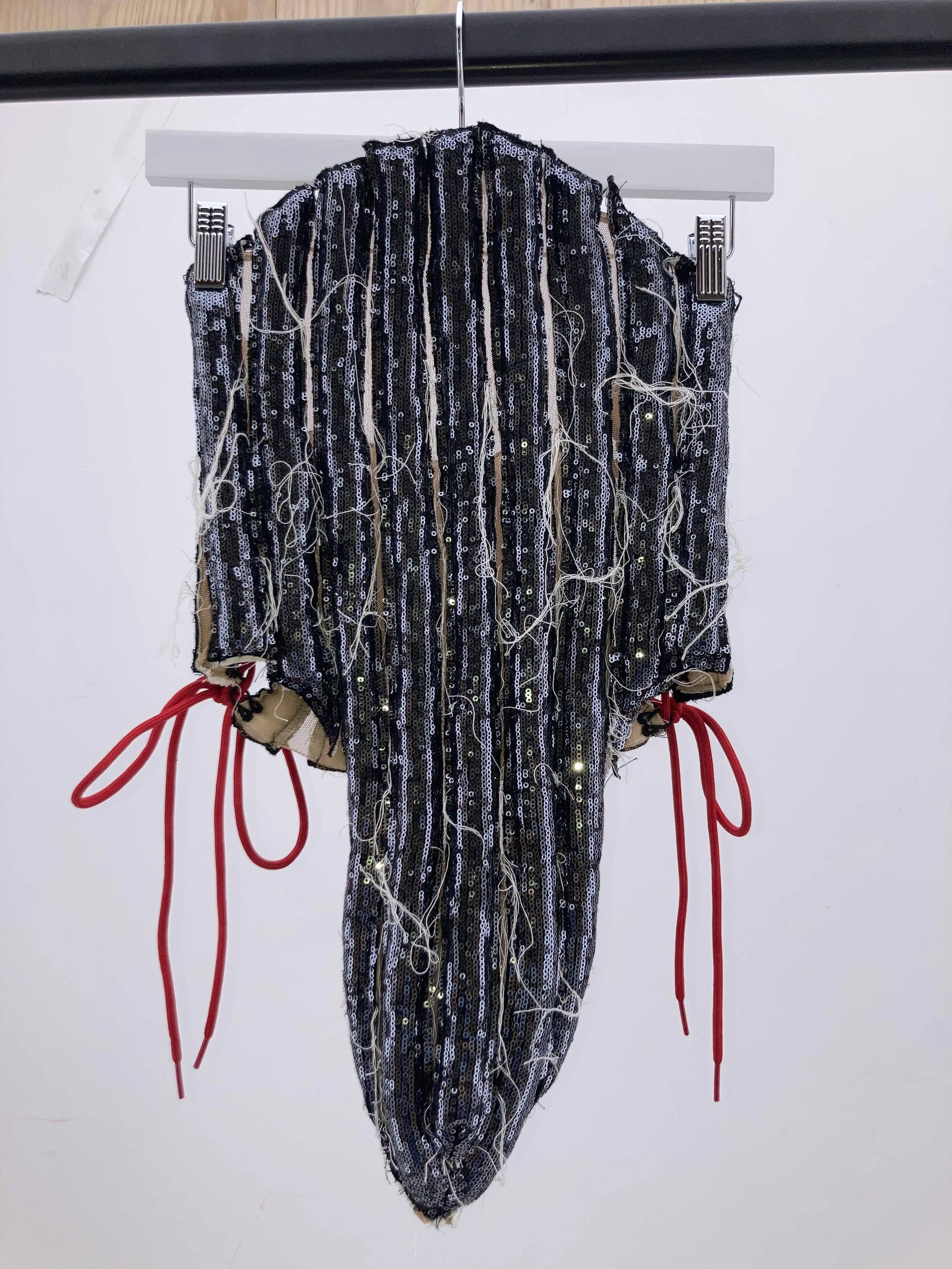Talent Talks: Jude Hinojosa
Creating menswear from a non-binary perspective, Central Saint Martin graduate Jude Hinojosa’s work offers us a new —much welcomed — view on fashion: embracing masculinity’s emotional side.
Jude Hinojosa - Ghosts of Daughters
Could you please introduce yourself?
I create menswear from a non-binary perspective. My pieces offer alternative choices in the traditional by embracing masculinity’s emotional side.
I now live a non-binary lifestyle that is true to myself but, for much of my time, I had conformed to aligning with gendered stereotypes because I was born physically male. It was during this experience where I witnessed the other sides of masculinity. There's softness, beauty, and desire for expression. I’m passionate about moving menswear forward where all people can feel comfortable being themselves and outwardly show it. This is accomplished by showcasing two very important attributes: choice and familiarity.
In the sea of uniformed attire, my work offers a choice in something different for people to consider. Some of the pieces will be outside a wearer's style. However, it will be an option available. This new choice is something they never had an opportunity to think about whether they would wear or not. This will be possible because of familiarity. By having upcycled menswear as a foundation in my collections, the revamped garments will give a sense of comfort. If a dress is made with menswear pieces, it strengthens its category as 'menswear', making it not so out of place when hung next to a suit. It's the mustard seed of change.
Storytelling is also a crucial foundation of my process. As a Latinx native of Texas, U.S.A., the importance of story within my Mexican and American culture was strengthened with my love of theatre. I immersed in this passion prior to my MA education from Central Saint Martins by having a freelance career in NYC working with costumes. It was an amazing experience and I took what I loved about ‘clothes with built-in drama’ and have applied it to my designs.
Having graduated recently, how do you look back on your studies?
I started the MA program towards the end of the pandemic protocols which had me take the first term online and in my hometown. It was during this time that I learned how to work with the resources that were available to me. Being able to create in a place where generations of my family have lived unlocked a more empathetic approach to upcycling. I was fortunate enough to have a unique experience of bonding with my culture and interests in a period of isolation while having access to tutorials from mentors who I highly respect.
I also gave myself permission to fail which was the best thing I could do for myself. I wanted my education to be a place where I could fully experiment on my craft and not worry about the end results coming out worthy of social media pictures or my personal expectations. Letting go of that pressure allowed me to focus on the areas of my work that I found most productive and, at times, the exact opposite. I think that failure as a result is something that will always be involved in anything I do and it was no different in my education. However, what comes out of that was the preparedness and confidence in the moments I value as success.
Jude Hinojosa - Ghosts of Daughters
Could you please tell us something about your graduation collection/project?
‘Ghosts of Daughters’ is inspired by spiritualist art and seances, where the dead use the living as a form of communication. This has been reimagined as ghosts using menswear to express the memories of their former lives. Garments are made with upcycled pieces, deadstock fabric, zero-waste draping, and locally sourced material from Walthamstow, the birthplace of spiritualist artist, Madge Gill.
I was first drawn to the topic of mystical communication when I saw Hilma af Klint’s work at the Guggenheim in NYC. I was impacted by her spiritual art but didn’t realize to what extent until years later, when I was analyzing when the spark of using worn clothing ignited in me. I always came back to this specific memory, only a few seconds long, from when I was at an estate sale as a child. I recall so much about the room I was in and, yet, nothing at all. The light from the window making the darkness less dense. The smell of stale wood. The bed that acted as a display table for a dress and a pair of gloves. I remember trying to connect the space and fabric to a person, someone I never met. And thinking what life will happen to the clothes when someone buys them.
My collection is influenced by the result of death; people and future memories that are lost to us. But it’s not about the end. It’s about life. It’s the pursuit of capturing what is no more and bringing it to the present so we can carry its memory and allow it to create new ones.
Jude Hinojosa - Ghosts of Daughters
Which materials, techniques, programmes and/or applications are you mostly interested in?
For my collection, I used a variety of techniques to bring my vision of Ghosts of Daughters to reality. Using a mixture of upcycled, deadstock, and new material, they are meant to resemble a living person. One who is not perfect, no matter how much they strive to be.
I’ve been working with the accordion textile since my Graduate Diploma course in 2019. I wanted to create a textile that acted like the living being it was hosted with. It follows the body, stretches to fit, and moves when a person breathes and walks. As I continued exploring the textile, I fell in love with the idea of having many layers to create one. For the look I used with the accordion, I pushed the story aspect of my collection. It captures the research I found about ectoplasm, which is a physical substance that emits from the body during seances. The raw strands of calico act as the energy that emerges from the beauty of sequins and skin.
I noticed circles and spirals in the works of many spiritualist artists. Each artist felt drawn to make it a part of their vision for a particular reason. For me, the spiral technique is about controlled chaos. There is a beginning and an end but that’s not important. It’s the puckering, the curves and folds, the dents that make the spiral technique exciting, unique, special. Much like a person’s timeline.
One of the methods I’ve been working with is the concept of zero waste. It’s quickly become a favorite design challenge of mine. I find that it no longer is me creating a piece that is in line with traditional practices but, more so, a physical discussion with the fabric and body.
Jude Hinojosa - Ghosts of Daughters
The exhibition you are a part of looks into the meaning of regeneration. What does regeneration mean to you and your work?
My idea of regeneration extends to tangible and the non-physical. In some of my looks, pieces can be ready to wear and grow old again, where it will be in consideration of a third rebirth, i.e. upcycling. Others are meant to be heirlooms and withstand generations. My pieces are about documenting our current view of society so we can observe and allow it to inspire us intellectually and creatively. Its story will be reworked by the analysis of future generations. And they will conclude different results in response to their present experiences, which is exactly what is meant to happen. In creating new insights of an idea from an aging object, such as pieces from my collection, is a regeneration that I welcome.
How do you perceive the meaning and importance of community within the fashion field?
Spiritualist art and seances, when it all comes down to it, it’s just a bunch of ghosts needing someone to listen to them. They could be loved ones, rulers of ancient civilizations, or some random spirit. They can create great art or move around a few pieces of furniture. Sometimes, we understand what is being communicated. Other times, there’s no way to relate and all we can do is be patient and listen. It’s the same with the fashion industry, both professional and education. Support and respect to the best of our abilities goes an extremely long way. Sometimes, a genuine hello can be the start of a strong, diverse community. And, just like communicating with spirits, not all will want to be part of the company available, but an open invitation breaks down that wall that separates us.
Jude Hinojosa - Ghosts of Daughters
NOoF: How do you view the future of fashion? And your own role therein?
I have always seen fashion as a tangible documentation of history and a foreshadowing of what’s to come. The future I want to bring up is expanding menswear to accepting a side of yourself that one might think is weak or not important. Because it is not true; it’s okay to express yourself, whatever that means to the individual. For me to accomplish this, I have to explore the past, present, and future all at once because it’s all connected. That’s why upcycling is important in my work. It helps me think of what I really want to take with me while I’m alive and what it will say of me when I’m gone.
Jude Hinojosa - Ghosts of Daughters





